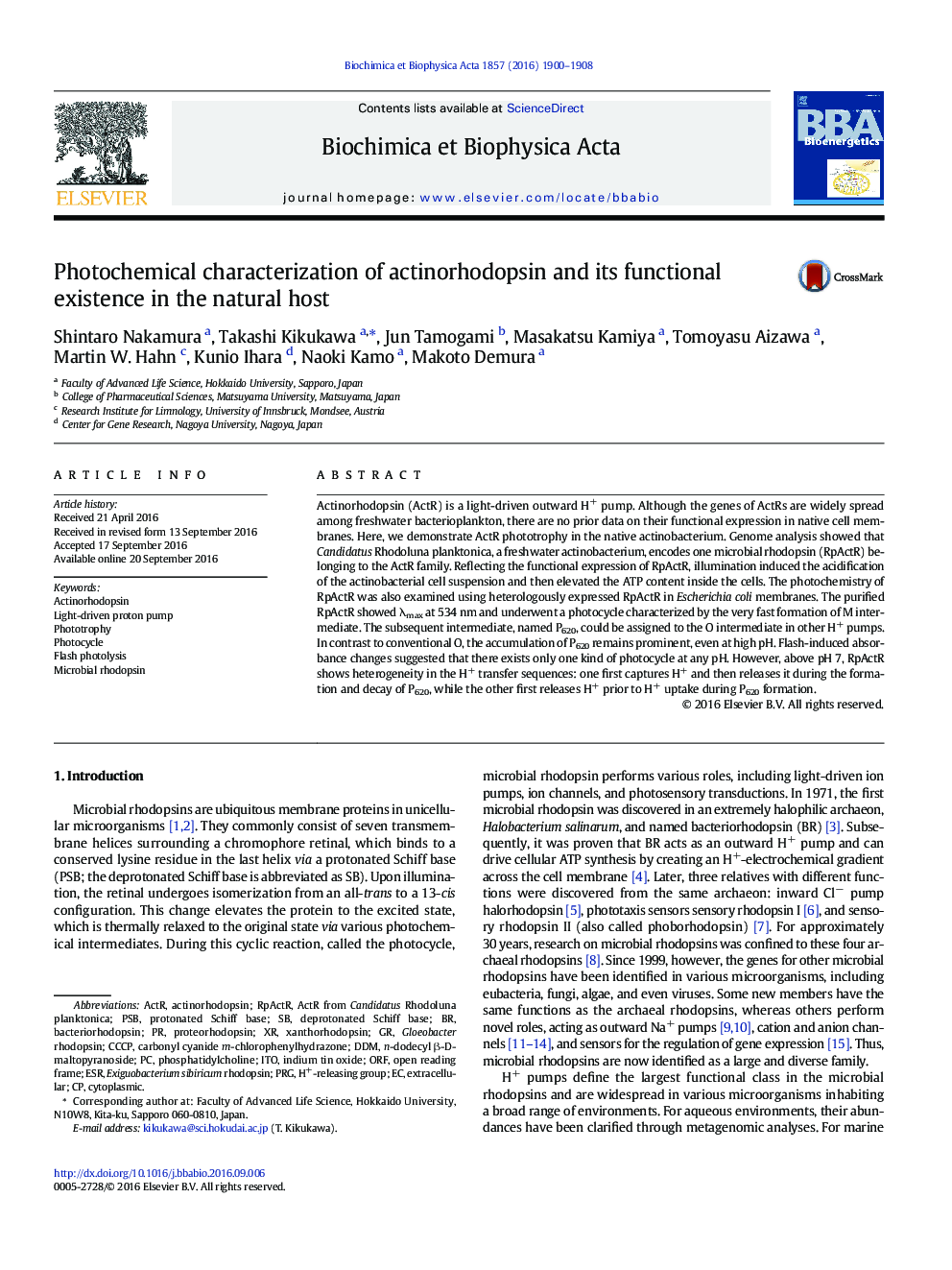| Article ID | Journal | Published Year | Pages | File Type |
|---|---|---|---|---|
| 5507287 | Biochimica et Biophysica Acta (BBA) - Bioenergetics | 2016 | 9 Pages |
Abstract
Actinorhodopsin (ActR) is a light-driven outward H+ pump. Although the genes of ActRs are widely spread among freshwater bacterioplankton, there are no prior data on their functional expression in native cell membranes. Here, we demonstrate ActR phototrophy in the native actinobacterium. Genome analysis showed that Candidatus Rhodoluna planktonica, a freshwater actinobacterium, encodes one microbial rhodopsin (RpActR) belonging to the ActR family. Reflecting the functional expression of RpActR, illumination induced the acidification of the actinobacterial cell suspension and then elevated the ATP content inside the cells. The photochemistry of RpActR was also examined using heterologously expressed RpActR in Escherichia coli membranes. The purified RpActR showed λmax at 534 nm and underwent a photocycle characterized by the very fast formation of M intermediate. The subsequent intermediate, named P620, could be assigned to the O intermediate in other H+ pumps. In contrast to conventional O, the accumulation of P620 remains prominent, even at high pH. Flash-induced absorbance changes suggested that there exists only one kind of photocycle at any pH. However, above pH 7, RpActR shows heterogeneity in the H+ transfer sequences: one first captures H+ and then releases it during the formation and decay of P620, while the other first releases H+ prior to H+ uptake during P620 formation.
Keywords
DDMxanthorhodopsinGloeobacter rhodopsinn-dodecyl β-d-maltopyranosideActRPrGPSBCCCPProteorhodopsinORFESRIndium tin oxideITObacteriorhodopsinextracellularmicrobial rhodopsincytoplasmicPhotocycleFlash photolysisphosphatidylcholineopen reading frameProtonated Schiff baseLight-driven proton pumpcarbonyl cyanide m-chlorophenylhydrazone
Related Topics
Life Sciences
Agricultural and Biological Sciences
Plant Science
Authors
Shintaro Nakamura, Takashi Kikukawa, Jun Tamogami, Masakatsu Kamiya, Tomoyasu Aizawa, Martin W. Hahn, Kunio Ihara, Naoki Kamo, Makoto Demura,
